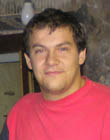|
|
This topic comprises 2 pages: 1 2
|
|
Author
|
Topic: Rectifier diode current rating question.
|
|
|
|
|
|
|
|
|
|
|
|
|
|
|
|
|
|
|
|
|
|
|
|
|
Dave Macaulay
Film God

Posts: 2321
From: Toronto, Canada
Registered: Apr 2001
|
 posted 04-02-2006 10:55 PM
posted 04-02-2006 10:55 PM




Semikron and IR have pretty much the same ratings, Semikron is a bit more conservative - IR's 85HFxx 85A Iav diode is rated at 133A Irms continuous; Semikron SK71/xx 70A Iav has a 150A Irms rating. If there's a part I don't know of or see on the Semikron spec sheets let me know.
So, unless once again mistaken, by the rated power (in the manufacturers part number) IR's 85A diode is the highest power DO-5 diode I can find.
Yes, installing higher capacity devices will enhance longevity. But - excepting the Strong blocking diode and similar - rectifier diodes especially in 3-phase bridges do not carry the full output current all the time and don't need to be rated for the full output current.
Diode failures in passive rectifiers in my experience are caused by 2 things. First, and most popular, lack of cleaning that leads to clogged fans and insulated heatsinks overheating the diodes, or bad installation of replacements with no heatsink compound, loose mounting hardware, and/or cold solder joints. Second, failed HF bypass capacitors that allow overvoltage stress on the diodes during lamp ignition.
| IP: Logged
|
|
|
|
|
|
|
|
All times are Central (GMT -6:00)
|
This topic comprises 2 pages: 1 2
|
Powered by Infopop Corporation
UBB.classicTM
6.3.1.2
The Film-Tech Forums are designed for various members related to the cinema industry to express their opinions, viewpoints and testimonials on various products, services and events based upon speculation, personal knowledge and factual information through use, therefore all views represented here allow no liability upon the publishers of this web site and the owners of said views assume no liability for any ill will resulting from these postings. The posts made here are for educational as well as entertainment purposes and as such anyone viewing this portion of the website must accept these views as statements of the author of that opinion
and agrees to release the authors from any and all liability.
|

 Home
Home
 Products
Products
 Store
Store
 Forum
Forum
 Warehouse
Warehouse
 Contact Us
Contact Us




 Printer-friendly view of this topic
Printer-friendly view of this topic





![[Confused]](confused.gif)



![[Razz]](tongue.gif)





